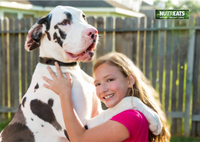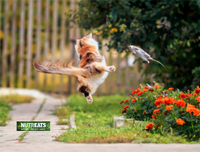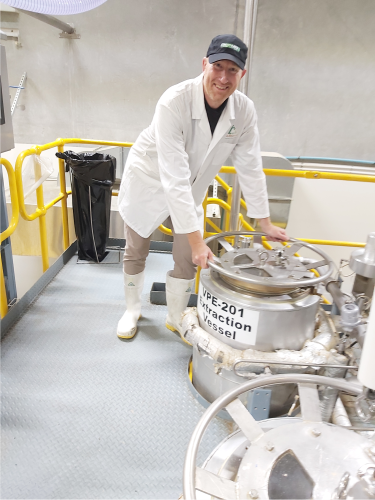Exercising My Puppy: How Much is Too Much?
Ben WintersExercising your puppy is important for their development and well-being, but finding the right amount of exercise is required to avoid the risks of overexertion.
Raising a puppy is an adventure filled with joy and learning experiences, both for the puppy and the owner. Taking your puppy for walks helps in developing strong muscles, improving cardiovascular health, and maintaining a healthy weight, which contributes significantly to the pup's overall growth and development. But it is important to strike a balance, and recognise the line between adequate and excessive physical activity.
Beyond your puppy’s physical health, exercise adds to their mental well-being. Engaging in various forms of play and exploration provides mental stimulation, which is vital for a puppy's cognitive development. This helps them understand their environment, social cues, and develop problem-solving skills.
Regular exercise can also be a key factor in reducing common behavioral issues in puppies, such as excessive chewing, barking, and digging. It provides a productive outlet for their energy, reducing the likelihood of them finding less desirable ways to expend it.

Moreover, activities involving exercise are excellent opportunities to bond with your puppy. Whether it’s through a game of fetch, a walk in the park, or a training session, these activities help strengthen the emotional connection between you and your pet.
However, while it is beneficial, overdoing exercise for your puppy can lead to several problems, especially in puppies whose bodies are still developing.
Excessive exercise can harm the growth plates in their bones, leading to developmental issues and long-term joint problems. Puppies are energetic but can tire quickly. Overexertion can lead to exhaustion and increases the risk of heatstroke, especially in warmer climates.
An overtired puppy might not necessarily be calmer. In fact, overexertion can make puppies irritable and may exacerbate behavioral issues like aggression or anxiety. Due to their short attention spans, overly tired puppies may be less responsive to training efforts, which are crucial for their development.
Exercise plays a vital role in the healthy growth of a puppy, contributing to their physical, mental, and emotional well-being. However, try to recognise the signs of overexertion and understand that each puppy has its unique exercise needs. Finding the right balance for your puppy will help you raise a happy, healthy, and well-adjusted adult dog
Your puppy will benefit from different forms of exercise and physical activity.
Play is an excellent way for them to learn social skills and burn off energy, with activities like fetching or tug-of-war providing both physical and mental stimulation.
Walks are not just for physical exercise, they also offer sensory experiences that are part of a puppy’s development, as they explore new environments and smells.
Training sessions, on the other hand, offer a structured form of exercise that helps in building discipline and strengthens the bond between the puppy and the owner.
Mental stimulation is as important as physical exercise in a puppy's development. Engaging their mind through activities like puzzle toys, hide-and-seek, or training exercises that require problem-solving, keeps them mentally sharp and can prevent boredom-related behaviors.
This type of stimulation is great for their cognitive development, challenging their brains, and helping them become well-adjusted adult dogs.
Puppy-appropriate exercise is important to ensure your young dog grows up healthy, both physically and mentally.
For walking, the general rule of thumb is a ratio of five minutes of exercise per month of age, up to twice a day. So, a three-month-old puppy would need fifteen minutes of walking, twice a day. This guideline helps prevent overexertion while providing enough activity for healthy development.
When it comes to running, it's typically advised to wait until the puppy is older, especially for breeds prone to joint issues, as their bones and joints are still developing. Controlled running in short bursts during play is usually fine, but prolonged jogging, especially on hard surfaces, should be avoided in the early months.

Playtime is also necessary for a puppy's development.
Engaging in playful wrestling with soft toys allows them to practise their natural behaviours in a safe and controlled environment. However, it's important to monitor play to ensure it doesn't become too rough or overly vigorous, which could lead to injuries or encourage aggressive behaviour.
Simple fetch games with a soft ball are excellent for mental stimulation and teaching retrieval skills, but keep sessions short to avoid tiring them out too much.
Swimming can be a wonderful low-impact exercise for puppies, particularly beneficial for breeds with joint concerns. It's a fun way to get them moving without putting strain on their developing bodies. Start with shallow, calm waters and always supervise your puppy to ensure their safety.
Navigating through a simple obstacle course can also be a great exercise, combining physical activity with mental stimulation. This can include activities like walking through tunnels, stepping over low bars, or weaving through cones. These exercises help improve coordination and confidence but should be set up with the puppy's size and agility in mind.
In all these activities, it's important to consider the puppy's breed, size, and age.
Larger breeds may require more physical exercise but are also more prone to certain joint issues, so a balance must be found.
Small breeds might not handle long walks as well as large breeds, but may enjoy more playful and mental stimulation activities.
Always observe your puppy's reactions during and after exercise. If they seem excessively tired, reluctant to exercise, or show any sign of discomfort, it's best to scale back and consult a veterinarian for personalised advice. Remember, the goal of these activities is not just to tire out your puppy but to provide a balanced routine that contributes to their overall well-being.
Physical and behavioural signs indicating that a puppy is getting too much exercise can include excessive panting, lethargy, limping, or a reluctance to continue the activity.
Behaviourally, a puppy might become irritable or unusually restless. Monitor how your puppy is behaving during and after exercise to ensure they are not overexerted. If you notice any concerning signs, it is essential to consult a veterinarian.

Creating a balanced exercise routine that is appropriate for your puppy’s breed, age, and energy level is a good idea.
Some breeds require more physical activity than others, and puppies typically have varying energy levels as they grow. Integrating rest and downtime is equally important to give their growing bodies time to recover.
Sample exercise routines can range from multiple short play sessions for younger puppies to longer walks and more structured training for older ones.
Before exercising your puppy, a pre-exercise health check can help make sure they are in good condition for physical activity. It is important to consider the weather and choose appropriate environments for exercise to prevent heat stroke or cold stress.
Additionally, socialising your puppy safely during exercise activities is important for their social development, but it should be done cautiously, especially before they’ve had all their vaccinations.
There are several myths surrounding puppy exercise that need to be addressed. One is understanding the difference between a high-energy puppy and one that is hyperactive.
Excessive exercise is not always the solution to a puppy's high energy levels, and 'more' isn’t always 'better' in terms of exercise. Recognising the correct amount of physical activity for your puppy’s age and breed is important.
Over-exercising a puppy can have several adverse effects, some of which may have lasting consequences on their health and development.
One of the primary concerns is the risk of physical injuries. Puppies have growing bodies with soft, developing bones and joints, particularly the growth plates, which are areas at the ends of the bones that haven't yet fully hardened.
Excessive physical activity can damage these growth plates, potentially leading to deformities and chronic joint problems like hip dysplasia, especially in larger breeds that are more susceptible to such conditions.
Over-exercising can also lead to immediate injuries such as sprains, strains, or fractures, as their developing bodies are less capable of handling high-impact or strenuous activities.
Another significant risk of over-exercising puppies is the impact on their overall growth and health. Intense or prolonged physical activity can lead to exhaustion and can affect their immune system, making them more susceptible to infections.
Young dogs exerting too much might not have sufficient energy left for growth processes. Additionally, over-exertion, particularly in hot or humid conditions, can predispose a puppy to heatstroke, a potentially fatal condition that requires immediate veterinary attention.
Over-exercising can also affect a puppy's behaviour and mental state.
Puppies need a balanced mix of activity and rest for healthy mental development. A puppy that is regularly over-exercised may exhibit signs of stress, anxiety, or irritability. This can manifest in various ways, such as excessive panting, reluctance to engage in activities they usually enjoy, or even aggression.
Furthermore, a tired puppy may have trouble focusing, making it more challenging to train them effectively. Training is not just about teaching commands but also about socialising and helping puppies understand and adapt to their environment. An over-exercised puppy might be too tired or stressed to engage properly in these learning experiences.
While exercise is vital for a puppy's health and development, overdoing it can lead to physical injuries, growth issues, and behavioural problems.
It is essential to provide a balanced routine that includes adequate rest and caters to the puppy's age, breed, and individual needs.
Observing your puppy for any signs of discomfort or fatigue and consulting with a veterinarian for tailored exercise advice can help ensure they grow into healthy, well-adjusted adult dogs.






